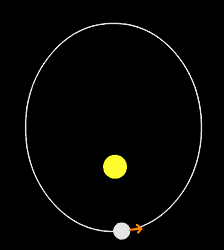

5) Simulator renders in detail only the part of Mercury's suface that was available prior to Messenger mission.

4) Mercury surface views' orientation: planetary local north "upward". 3) Second orbital view orientation: Ecliptic north "upward". 2) Top orbital view orientation: Sun's local north "upward", i.e. Simulator Image Notes: 1) Fields of View are measured horizontally. Generally, it is most easily seen when it is near or at Greatest Elongation, because that is when it appears fathest from the Sun's brilliance. This is why-in all but the polar latitudes-Mercury can never be seen more than two hours before sunrise nor after sunset. Most of the time it is much closer than that. But remember, great care must be exercised when trying to view Mercury, as it is never wanders father than about 28° from the Sun. So, generally, (in all places except the polar regions), Mercury is currently rising at the "left edge" of Earth, and setting at its "right edge". And don't forget-Earth rotates to the east (left to right in the image above).

Likewise, the closer a location is to the edge of the above globe, then the closer Mercury will be to its horizon. The closer a location is to the view's center, the higher Mercury will be in its sky. If a location is on the half of Earth shown above, then Mercury is in its sky as follows. Showing Mercury's current position over Earth, the bonus view above therefore also shows the half of Earth that currently has Mercury visible in its sky-weather permitting, of course. Note: 1) from Earth, Mercury's orbit appears "edge-on" in early May and early November 2) from Earth, Mercury's orbit stretches rouughly 1/8 of the way around our sky.įOV: 30° Magnification: 1x (naked eye) Location in Constellations Skypath 2021-2022įOV: 2' (arc-min) Magnification: 900x Compare Current PlanetsįOV and Magnification vary so Mercury fills imageīecause Mercury is one of the two Inferior Planets-that is, like Venus its orbit is smaller than Earth's-the following image will help you relate its current phase to its position in orbit.īonus: Mercury's Current Position Over Earth On Twitter, Facebook, Google News, and Instagram.Image Credits: NASA/JPL Solar System Simulator developed by: David SealįOV: 60° Magnification: 0.5x (to show entire orbit) Inner Planet Orbits Greatest Elongations 2022 Since being discovered in 1846, Neptune has only completed one trip around the Sun.įollow HT Tech for the latest tech news and reviews, also keep up with us However, Neptune will amaze you! Neptune takes 60,190 days to complete one trip around the Sun. Uranus takes 30,687 days to complete one revolution. To put that into context, one year on Jupiter is almost 12 years on Earth! Saturn takes 10,759 to complete one trip around the Sun. Jupiter, also called the Gas Giant, takes 4,333 days to complete one trip around the Sun. The planets in the Outer Solar System take considerably longer to complete one trip around the Sun. The Outer Solar System consists of planets Jupiter, Saturn, Uranus and Neptune. The red planet takes 687 days to complete one trip around the Sun. Mars is the outermost planet of the Inner Solar System. Earth takes roughly 365 days to complete one year. So, it completes one trip around the Sun in 225 days. Venus is the 2nd closest planet to the Sun and therefore is the 2nd fastest. Mercury completes one revolution around the Sun in just 88 days. Mars being closest to the Sun takes the shortest trip around the Sun, so it takes the least number of days. The Inner Solar System consists of planets Mercury, Venus, Earth and Mars.


 0 kommentar(er)
0 kommentar(er)
